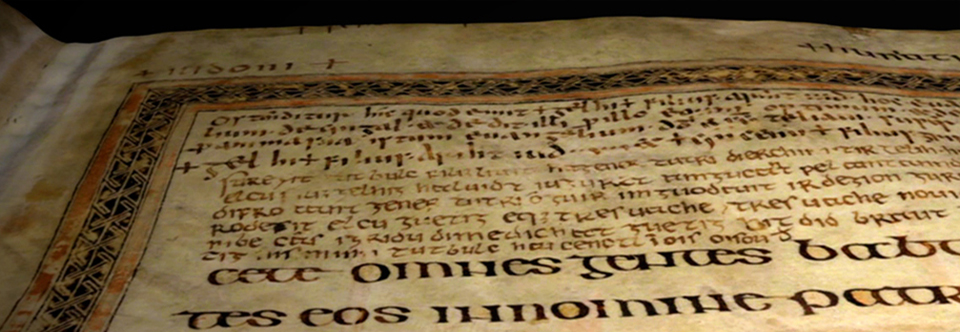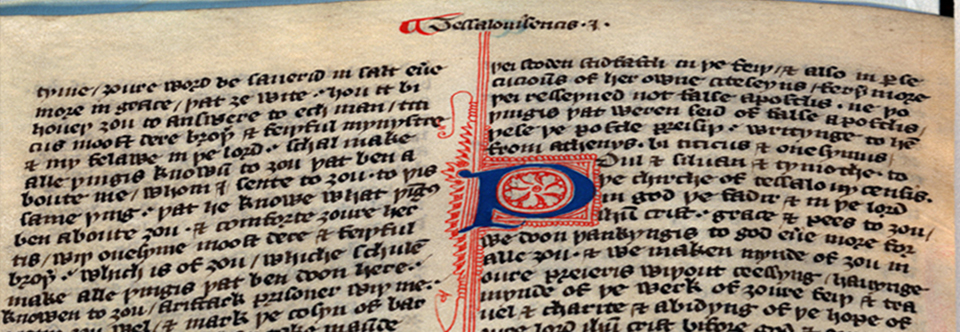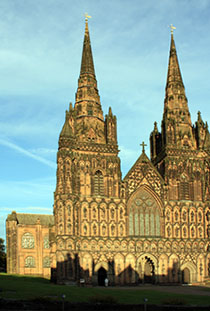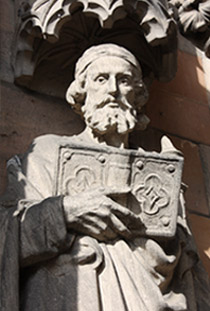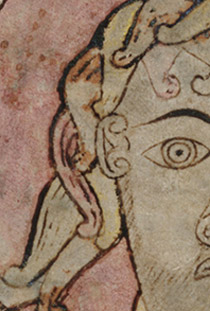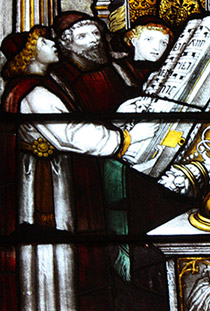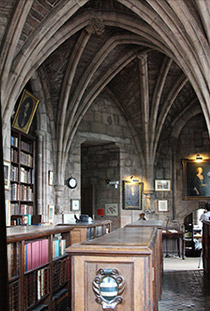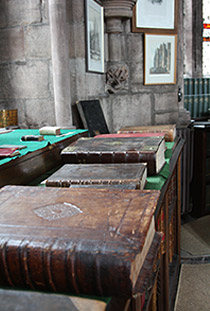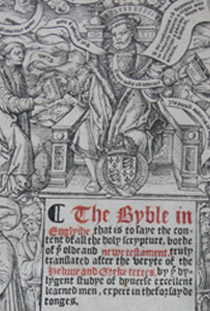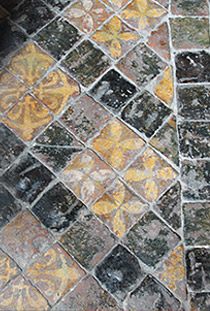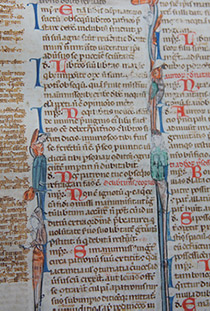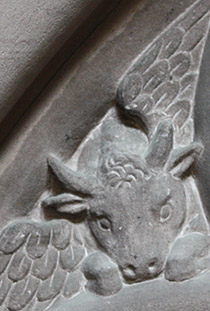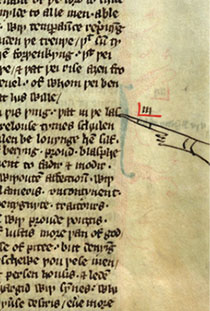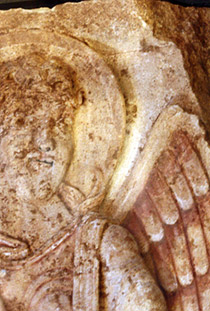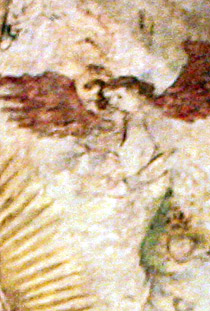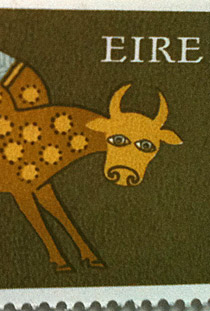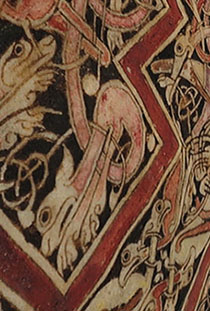Made around 730, the St Chad Gospels is an exquisite blend of cultural influences in the British Isles and beyond. It shows strong correspondences with the Lindisfarne Gospels, which predates it slightly, and the Book of Kells, which it predates by about 70 years. The St Chad Gospels contains the earliest surviving examples of Old Welsh writing.
This project digitized two of the treasured manuscripts of Lichfield Cathedral, the 8th-century St Chad Gospels and the Cathedral's 15th-century Wycliffe New Testament. However, the project recognizes that digital images incompletely capture the materiality of any early medieval manuscript. Therefore, it employs a variety of advanced imaging techniques to capture and present different and telling aspects of this materiality. Currently, its primary focus is the St Chad Gospels, part of the exquisite holdings at Lichfield Cathedral. Lichfield Cathedral is among a small and select group of cathedrals whose libraries preserve pillars of artistic and religious expression. The two manuscripts presented on this website provide irreplaceable evidence about the early medieval period, from the development of religious and artistic practices, to advances in bookmaking, to intercultural influences, to the transmission of Christianity in the West. Furthermore, the legacy of the St Chad Gospels includes influencing the well-known Book of Kells, whose artists built upon its accomplishments.
Finding ways to digitally capture and represent the materiality of a manuscript presents countless challenges. No one technology accomplishes the task. I began by capturing 2D visual information through multispectral imaging. Multispectral imaging captures different frequencies of light, from ultraviolet to infrared. Infrared and ultraviolet are especially adept at recording details just beyond human sight. Generally, I took photographs using thirteen different frequencies, providing a good range of possibilities for recovering worn and water-damaged text and imagery.
To organize and expose salient information from the multispectral photographs, I developed an overlay viewer. It allows adjusting the transparency for the top image through a slide-bar for meaningful comparisons. To develop the viewer, I worked with Noah Adler, a programmer and valued colleague. This viewer is significant because it enables me to organize fourteen images per page (thirteen multispectral and one RGB—roughly 1.5 gigabytes of data). The overlay viewer makes working with the multispectral images easy, efficient and highly productive.
However, the limits of 2D are readily evident for anyone experienced in viewing manuscripts. When observing an illuminated manuscript, part of its expression is its play of light. For the St Chad Gospels, artists heightened this play by layering pigments (the St Chad Gospels is the earliest extant manuscript in the British Isles to do so extensively). Furthermore, the St Chad Gospels includes dry-point glosses. These glosses are etched with a stylus but no ink, meant to go unnoticed. They are notoriously difficult to see, let alone capture.
To capture dry-point glosses, the textures of layered pigments, and other surface detail, I used an advanced imaging technique known as Reflectance Transformation Imaging (RTI). RTI requires a series of registered photographs taken with varying directional lighting. Its software combines the photographs into a single file, which when viewed, allows control over lighting and use of algorithms to enhance surface details.
Through a grant from the West Semitic Research Project, I learned RTI and captured pages of the St Chad Gospels with this advanced imaging technique. A comparison between 2D and RTI images readily demonstrates the benefits:
| Portrait of Luke, details of robe, RGB | RTI |
RTI is a slow process. Therefore, I only captured major decorated pages and pages that contained or possibly contained dry-point glosses. It proved highly successful. Through RTI, I discovered glosses that scholars did not known existed. On the website, I have sixteen high-resolution RTI renderings available for viewing, allowing for a spectral enhanced view and control over the direction of the lighting. Also, I produced a video about RTI for dry-point glosses. My project is the first (or one of the first) to demonstrating RTI's value for capturing these notoriously difficult to see and discern glosses.
One reason that 2D photography lacks the ability to represent the materiality of a manuscript is that it subtracts a dimension from its representation. To capture the three-dimensionality of a page, therefore, I captured 3D data for each page while taking the multispectral photographs. 3D changes heuristics for seeing and provides essential information for conservators, such as the contours of pages. On the website, I have sixteen high-resolution 3D renderings. To make manipulating the renderings as flexible as possible, the website’s 3D viewer allows any pixel on a page to become the epicenter around which the whole page turns. In addition, I include tools for measuring any feature of a page, making and saving annotations, and generating a URL for any position a 3D rendering is manipulated into for ease of return. Justin Hall, a talented undergraduate student, wrote much of the code for the 3D viewer.
Finally, perhaps the aspect of materiality that is most difficult to make peace with is aging. To help understand the aging process of the St Chad Gospels, I digitized every image of this great gospel-book that I could find, from photographs in oversized books, to a Photostat copy made by the National Library of Wales, to color slides, to black and white images. The dates of images include 1887, 1911, 1929, 1956, 1962, 1982, 2003 and 2010 (my imaging). I placed these images from across time in the overlay viewer, allowing changes, like chips of pigments breaking free, to be observed and documented. In an illuminated manuscript, visual information is too rich and changes occurring over too long of periods for human attention and memory to recognize patterns of change. The digital overlays provide a ready opportunity for recovering this knowledge.
Knowledge is dependent upon what we preserve. I am grateful to the Chapter of Lichfield Cathedral for its support of this project, contributing to the growth of our knowledge, now and in the future.
Front row: David Jacobs, Senior Conservator, British Library; Bill Endres, Project Leader & Principal Scholar, formerly University of Kentucky; Brent Seales, Director of Vis Center, University of Kentucky; Zach Welchel, Media Specialist, Asbury University.
Back row: Matt Fields, Software Engineer, University of Kentucky; Daniel Stanley, Software Engineer, University of Kentucky; Ben Corwin, Media Specialist, Asbury University; Andy Seales, Media Crew Helper; Rev'd Pete Wilcox, Canon Chancellor, Lichfield Cathedral.


